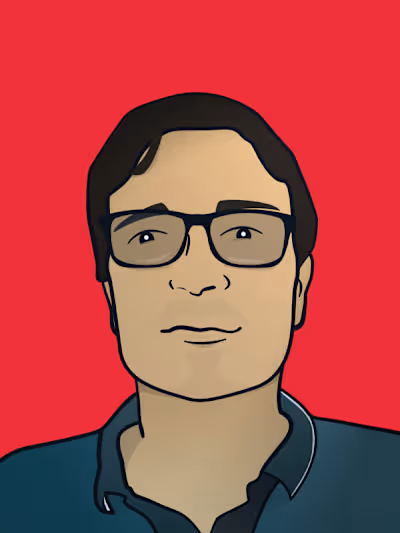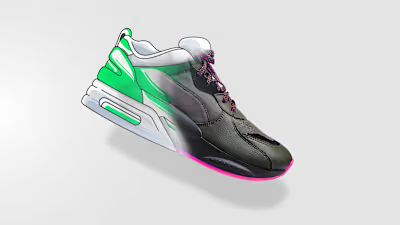SO WHAT IS METAVERSE?(Page Design)
You don’t need a strong spidey sense to start feeling like a mark in the metaverse; I’m not exactly sure what, but someone’s definitely selling something.
In fact, scrap that. In the metaverse, EVERYONE is selling something. And Zuck’s doing it harder than most.
Facebook, the parent company of everybody’s favorite fake-news machine, is now called Meta, and they claim to be moving us towards the “next evolution of social connection”, which will probably include more payment points and fewer friends than the previous one.
The NFL is in the metaverse, selling stuff. Players from Brady to Mahomes to Gronk, all in the metaverse, all selling NFTs. Ralph Lauren wants to sell us digital clothes in Roblox, which teamed with Nike to build Nikeland – a virtual version of the company HQ, equipped with minigames like The Floor is Lava and dodgeball. Nikeland is free for now, but I think we all know that paid content is coming.
Now, it’s really starting to seem that the mainstream adoption of the metaverse may not be too far away.
The metaverse isn’t a new concept. Many games have represented similar new online worlds, like Second Life, Roblox, Minecraft, and even to a degree, World of Warcraft.
In essence, the metaverse is a type of virtual reality environment that tries to imitate the real world with a game world; 3D avatars roaming about buying and selling shit. NFTs instead of baseball cards, digital airports instead of real paved runways, digital tokens instead of US dollars.
Each metaverse is unique in its own way, though the majority follow a common theme of recreating a real world into a virtual one. Upland just launched Los Angeles.
The use of VR headsets offers a more immersive experience. Having said that, without fundamentals like touch and taste, it’s difficult to be truly absorbed in the virtual world.
I wanted to get my own perspective on what the metaverse offers, so I took a stroll through two upcoming metaverses Decentraland and PolkaCity to see what the fuss is all about.
Decentraland is a user-owned world where you can explore, play, and interact with others. The world is built upon the Ethereum blockchain, with three currencies, or native tokens, MANA, LAND, and Estate. With these tokens, you can buy and sell collectible NFTs, purchase land, as well as design and customize your property. Pretty much anything that is worth doing.
Decentraland’s Discord channel was my first port of call. I was warmly welcomed by various community members, who popped in and out of the channel and offered various tips and advice—mostly trying to sell me collectibles and clothing. While the conversation didn’t offer any real depth, I gathered some tips before creating my own account.
Once I signed up, I was given the opportunity to customize my avatar. It mostly consists of obvious things we’ve seen before in games; gender, skin color, hair, eyes, clothing, and other minor details, with the final tab “collectibles” leading to a marketplace to purchase various unique items to wear. Each collectible is an NFT, meaning they hold value in the ecosystem. Once I’d selected my attire and customized my avatar I entered the world, where I was greeted with the controls and how to navigate the world.
My initial impressions were that the experience was fairly underwhelming—it reminded me of Fortnite, only less alluring. I was able to wander around using a mouse and keyboard, looking at the various constructions and soaking in what was to offer. Yet, there was nothing to do.
Occasionally some people walked past, but they were mute and seemed to be as lost and confused as I was. A compass in the top left-hand corner would notify me of “empty parcels” that represented property that was for sale.
I decided to look through the Decentraland market and consider whether to purchase some currency. But nothing was particularly appealing and I was losing interest, so I decided to move on to another metaverse.
Next up, PolkaCity, which is touted as a place to “earn profits by owning virtual taxis, gas stations & services.” Upon signing up, I went through the standard avatar customization process.. On entering the world, the standout difference was the graphics and interface. Decentraland felt like a child-friendly mix of Sims and Nintendo Wii graphics, while PolkaCity seemed like a gritty replica of the GTA game series, with the minimap in the bottom left-hand corner and the way in which cars and people interact.
Having proved to be the right entry point last time, we decided to check out the PolkaCity Discord. After some fairly stodgy conversation with a couple of PolkaCity patrons, I was fortunate enough to run into an owner of a virtual airport.
He was keen to talk and confidently told me about the potential for metaverses, then went into detail about PolkaCity and how it has the potential to be a global success. He definitely knew his stuff and didn’t seem to fit the profile of the classic “crypto-bro.” I quizzed him about his life and day-to-day responsibilities as an airport owner, though he said that things were still in the beta stage and there’s currently nothing to do. However, he did mention an AI NFT that could automate jobs, such as ensuring taxi services run 24 hours a day, 365 days a year.
When asked about the metaverse, the conversation always led back to the utility token (POLC) and its value within the PolkaCity ecosystem. Having exhausted the conversation about PolkaCity, I wanted to get the airport owner’s take on the future of the metaverse industry. He seemed convinced that this would be the future and the only thing stopping us at the moment is the technology, as what is available now is too rudimentary and doesn’t captivate users. His closing statement emphasized his belief “More and more people connect behind the scenes, whether we like it or not, it’s in my opinion where the world is going. How long it’s going to take is probably the only remaining question.”
Like this project
Posted May 13, 2023
You don’t need a strong spidey sense to start feeling like a mark in the metaverse; I’m not exactly sure what, but someone’s definitely selling something. In…
Likes
0
Views
7



